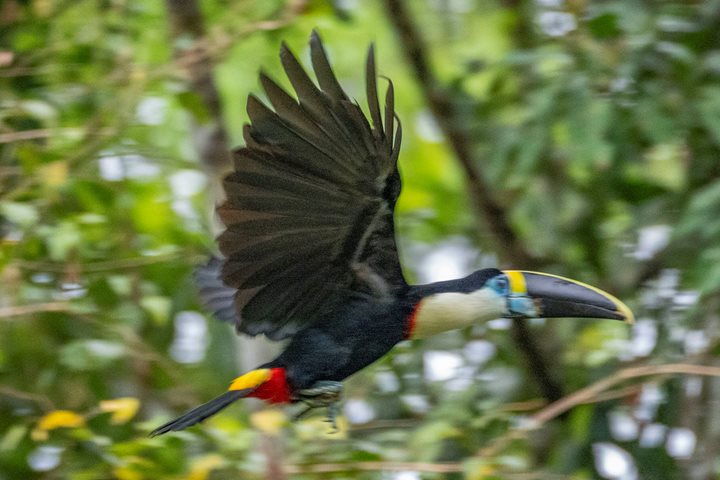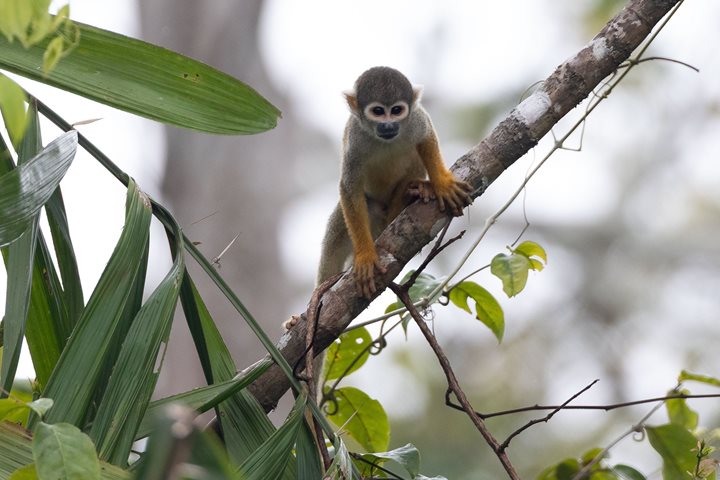The first day of our expedition exploring the Upper Amazon started with a visit to the Clavero area. Located along the Ucayali River, Clavero is part of the Pacaya Samiria National Reserve. We boarded our aluminum skiffs immediately after breakfast and headed to a former portion of the Ucayali that eventually closed itself and is now an oxbow lake. Right at its entrance we got the chance to see our first tucuxis or grey river dolphins. A little bit later we spotted the larger botos, or pink river dolphins, inside the lake proper. Not a bad start! We continued exploring Clavero Lake and eventually entered a small tributary known as the Clavero River. We got acquainted with numerous bird species characteristic of the area, including large, billed terns, lesser yellow-headed vultures, swallow-winged puffbirds and yellow-headed caracaras. Neotropic cormorants, great and snowy egrets were too numerous to keep track of their numbers. A colony of yellow-rumped caciques delighted us with their complex calls and their nest building techniques, while ringed and Amazon kingfishers were busy looking for small fish to catch. Back onboard we had the chance to attend a few lectures and learn about this unique region. We also learned some photographic techniques that hopefully will increase our chances to get great photographs.
We boarded our skiffs one more time in the mid-afternoon and explored a different area where the beautiful Delfín II had moved to during the middle of the day, the Supay River. Close to its confluence with the larger Ucayali, the shorelines of the Supay River are covered by extensive fields of camu-camu bushes, the plant that produces the delicious fruit by the same name, and reputed to have a concentration of vitamin C a hundred times greater than an orange. Local people harvest the small, round fruits during the flooded season from their small wooden skiffs to sell in the larger population centers like Nauta or Iquitos. Camu-camu is highly appreciated and we have been enjoying it onboard since the very first day. A bit deeper into the Supay we found taller trees, numerous birds and other creatures, most notably several three-toed sloths and pygmy marmosets, the world’s smallest monkeys. These tiny primates are much smaller than the average squirrel and very difficult to see due to their small size and preference to live around dense vegetation, very likely a defensive strategy against the numerous hawks and other birds of prey that would love to catch a little primate snack. We really enjoyed watching this remarkable species and even managed to get a few pictures. A group of medium-sized toucans known as the chestnut-eared aracari entertained us with their antics and play-fighting on a tall tree. A rising moon over the jungle regaled us with wonderful views on our way back to the ship. Overall, a great first day exploring mighty Amazonia!







